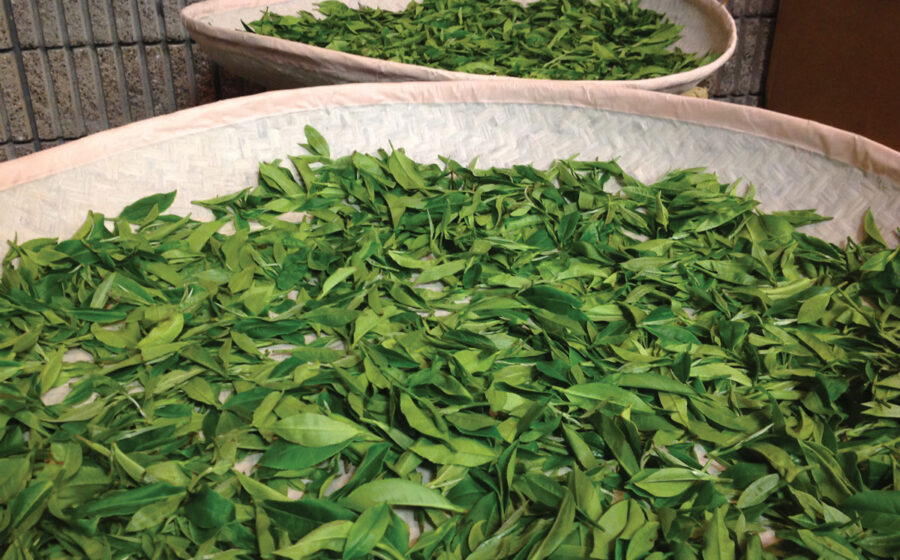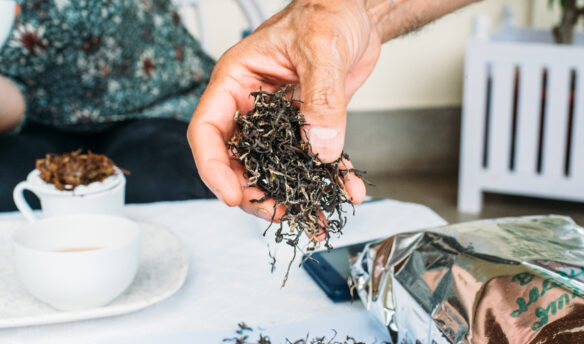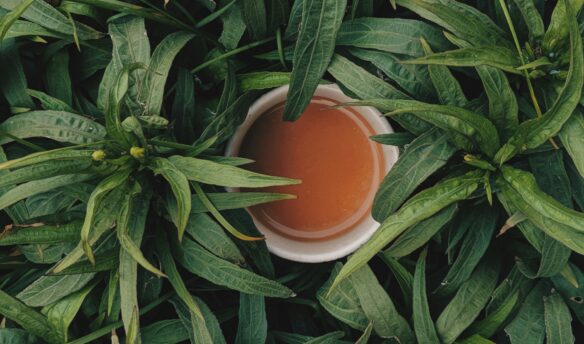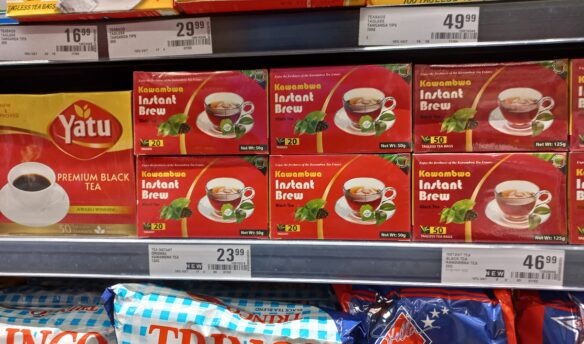[M]anufacturing tea is an art. It’s poetry in motion, a cross between jazz and agronomy. The tea maker is a farmer, a chef, a craftsman, a mechanic and a chemist, melded into one. It takes years and countless hours to become a master at making tea.
A few months ago, I manufactured tea in a conference room in Atlanta, and it’s worth noting that many of the tea experts whom I most respect said we were crazy to even try it. And they were right—it was crazy. But son of a gun, the teas actually turned out pretty good.
But let’s back up a bit: Why would we even try to do this? I’ve been in the specialty tea business for almost 20 years, during which time I’ve been very lucky. I have visited dozens of tea gardens, where I’ve watched and even helped manufacture tea many times (though I was probably slowing down the real tea masters at work).
But I realized long ago that because many people selling specialty tea will never get a chance to visit an actual tea estate or tea factory, it could be worthwhile to bring the tea factory to them.
And so in late October, I co-presented a workshop called “Processing Tea: An Experiential Workshop” at the World Tea East exhibition in Atlanta. Using next-day air, we flew in just-plucked tea leaves from Hawaii, then over the next two days we (along with the class attendees) manufactured white, green, yellow, oolong and black tea. It may sound like I’m being hyperbolic, but nothing like this had ever been attempted before (except for in June 2013 when we tried a warm-up version of this course at the World Tea Expo in Las Vegas).
I presented the class with Donna Fellman of the World Tea Academy (which is part of World Tea Expo), and she and World Tea Expo deserve tremendous credit for taking a huge chance, putting up the cash necessary and providing all the support possible for us to conduct this class. Donna is one of the world’s great tea educators and was a co-conspirator in this crazy idea since its inception. Also contributing to the success of the class was Eva Stone, proprietor of Tea Hawaii, who supplied us with the freshly plucked tea leaves.

Donna has developed a system of packing, layering and insulating tea leaves using dry ice and coolers. And it works: When we unpacked the tea leaves in Atlanta, 24 hours after they were shipped, they looked like they had been plucked off the bush about three hours earlier. By this I mean a small amount of withering had taken place, so the leaf had become a bit floppy. This effect also takes place as leaves move from the fields to the factories.
During two three-hour sessions we tried to mimic what happens in a tea factory as the freshly plucked tea leaves are brought in from the field. By definition, this is kind of crazy, mostly because:
• We weren’t in a tea factory; we were in a conference room at a convention center.
• We were going to try to make five different types of tea, all in the same room at the same time.
• We didn’t have any of the equipment available at a tea factory.
• The climate was totally wrong and uncontrollable (we were battling hotel-level air conditioning).
• And most importantly, we are not tea manufacturing experts. Donna’s a great communicator, but I’m just a tea merchant. Who the heck did we think we were?
But we were determined to try to manufacture by hand all categories of tea, except for dark tea and pu-erh. I admit that we chickened out on this, but maybe we’ll try it next year. Also, not only were we going to manufacture these teas, we were also going to demonstrate and teach others how these teas are made.
Well, we did it, with some timely expertise from Nigel Melican of TeaCraft. Nigel was at World Tea East conducting his own workshops, but he would pop in whenever possible to work the leaves more thoroughly, make suggestions on how to adapt to our hotel environment or (as in the case of the oolong tea) tell us what we had done wrong. We made white tea (two types—Silver Needles and Shou Mei), green tea, yellow tea, oolong and black tea.
How did they turn out? As a tea merchant who evaluates more than 3,000 teas a year, I would have bought the Silver Needles, the Shou Mei, the green tea and the yellow tea. The oolong and black teas looked great but had absolutely no depth or redeeming qualities.
So what did we learn from this, both the instructors and the participants? Here are a handful of lessons:
First, it’s incredibly difficult to make tea that looks, smells and tastes great.
Second, the aromas generated when manufacturing tea are almost intoxicating.
Third, it really is like jazz. You are constantly reacting and improvising as you monitor how the leaf is behaving, what the temperature is, what the air flow is doing and how you should respond to all these moving parts.
Fourth, it re-ignited the passion for tea that all in that room shared. We left that room fired up and slightly in awe. And it deepened the respect we have for specialty tea and for all those tea pluckers, tea factory workers, tea sorters, tea masters and more who strive on a daily basis to provide special teas.
After many years in this business, these sessions have left me grateful for three things: being able to actually make a living in this most special of niches; having had many chances to learn from people wiser than me; and being blessed with the opportunity to share some of that knowledge and all of that passion with others entering the business.
—Bill Waddington is the founder and president of TeaSource.















